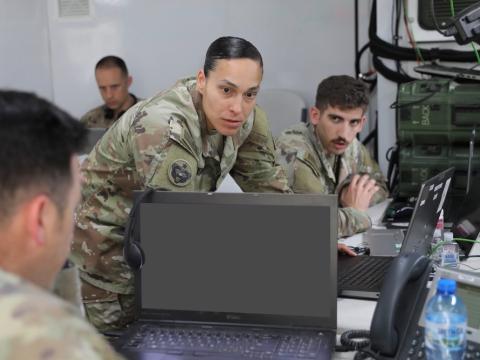Balanced Warfare for the New Normal
War doesn't mean it what it used to, and as we struggle to find the right words to describe "our new normal," terms like "asymmetrical," "hybrid" and "irregular" warfare only paint part of the picture, according to Adm. Eric T. Olson, USN, commander, U.S. Special Operations Command. "The threats we are facing are not new," he said. "But the specific nature of this threat is a new challenge."
War doesn't mean it what it used to, and as we struggle to find the right words to describe "our new normal," terms like "asymmetrical," "hybrid" and "irregular" warfare only paint part of the picture, according to Adm. Eric T. Olson, USN, commander, U.S. Special Operations Command, who gave the lunch address today at the Joint Warfighting Conference. "The threats we are facing are not new," he said. "But the specific nature of this threat is a new challenge." His statements echoed the sentiment's of yesterday's panel, but then Adm. Olson went on to describe how he sees it.
Adm. Olson advocated a balanced warfare approach, stating that we need the agility to transcend the spectrum of conflict effectively. Operations structure should shape our force structure, not the other way around. And even though, he continued, the direct approach might seem like the most decisive approach, the indirect approach, which involves nonkinetic engagement, allows us to do important relationship building that will bring successful outcomes.
A balance between the indirect and direct approach has already generated successful outcomes in places like Colombia, where several hostages were released due to successful work with the Colombian special forces, and in the southern Philippines, where stability has been increasing after nearly 40 years of insurgency. In Afghanistan, the admiral explained, nearly half of the more than 5,000 missions executed have been indirect in nature. "The key to balanced warfare is persistence," he said. "The emphasis is on engaging the underlying environment rather than the threats that emerge from that environment."
In other words, while 3,000 of these missions were kinetic in nature, where the intent is to make contact with an adversary force. But 2,500 of those missions were never intended to have that kinetic outcome. These missions include providing health care; delivering aid and supplies; helping create a media environment by providing microphones to potential broadcasters and radios to local people so they can hear those broadcasts; construction of roads, schools, irrigation systems and more in conjunction with USAID, to name a few. "Very important relationship building and trust building occur during these events," Adm. Olson said. "Local forces do the work and everybody wins."
And there is no way to make a one-size-fits-all-solution to the problem, he added, saying, "Counterinsurgency doctrine is an oxymoron ... knowledge trumps doctrine."
Adm. Olson concluded by saying he was coming to understand that it is not so much the outcome of military actions-tactically or operationally-that is important, so much as what is believed about those outcomes. And while direct action will always be necessary, it is the indirect approach of building relationships that will ultimately allow us to prevail. "Winning the wars of today and tomorrow requires the engagement of the resources of all our nations,"he said. "Only then can-and will-we prevail and achieve the success for which we strive."




Comments